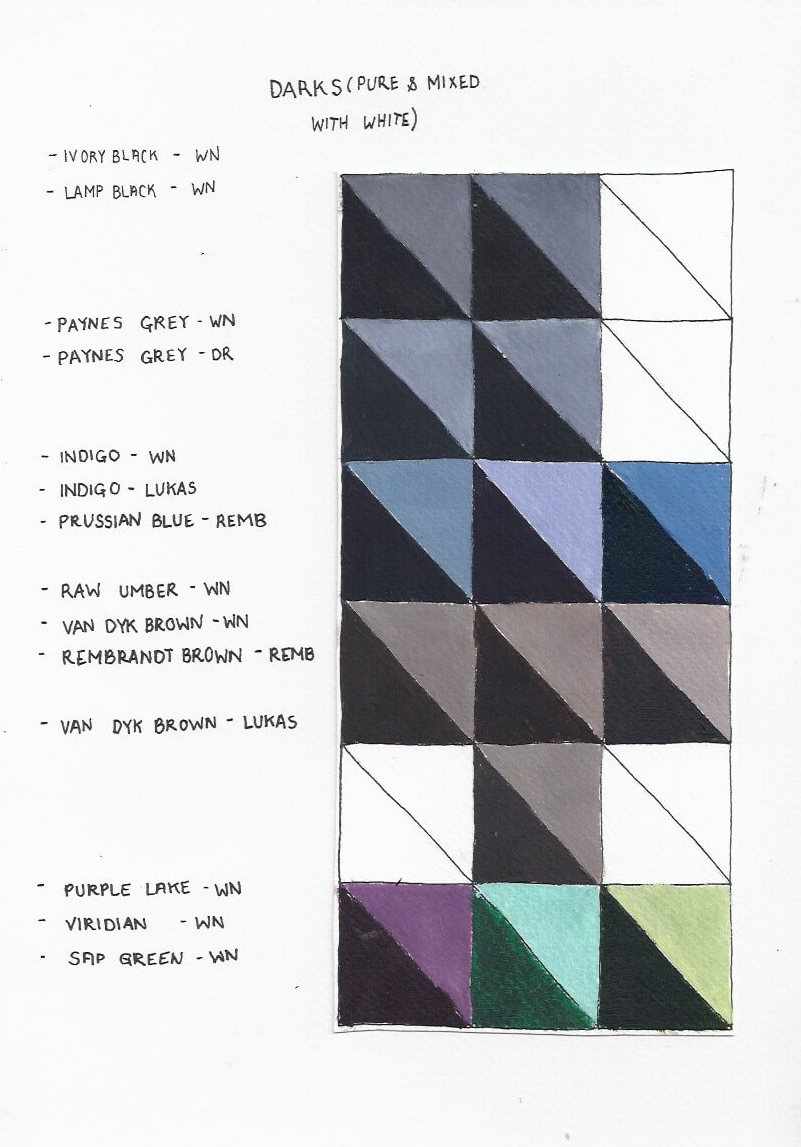“White may be said to represent light, without which no colour can be seen; yellow the earth; green, water; blue, air; red, fire; and black – black is for total darkness.”
- Leonardo da Vinci
Black is often seen as a 'no-no' within oil painting, or at least as a colour that should be used sparingly. However as with any colour or tube of paint, its all about understanding the underlying pigment and what its' most effective use is.
Gregory Manchess, in a blog entitled 10 things... About Painting in Oil , describes this quite well,
“Yes. Use black. Black exists in Nature, much to the chagrin of quite a few instructors. You just don’t want to use it to grey colors for skin tones, shadows, etc. Then you really will get muddy. If you want to make black exciting, mix other transparent colors into it. You’ll get a fabulous range of blacks. But you have to learn to use black. You learn through patience and practice. Look for places to use it judiciously.”
For the artist, an understanding of the correct use of black is vital, especially as black often leads to a dead or dull area within a painting. For the Old Masters however, black and other darks covered large parts of their final works.
The Man with the Golden Helmet, Rembrandt, 1650, Oil on Canvas
As with other colours and pigments one will find various names and types of blacks on manufacturers’ products. This can describe how it was made or represent its history. This history will determine what the specific paint brings to the canvas.
Ivory Black
Ivory Black is historically also known as Bone Black, and was originally made by the Romans who burned bones to gain access to this pigment. Later on, as better pigments became more sought after, pure Ivory was used instead of bones. True Ivory Black is more intense and has a higher carbon content than Bone Black. Examples of Ivory Black can be found in the deep velvety backgrounds of Rembrandt's paintings. Ivory Black can still be purchased, in very small quantities, at a costly price. However, the ivory used is harvested from animals that naturally pass away. Here's a link to buying bone black pigment. It is important to note that both pigments are slow drying within oil and should never be used in an underpainting. The pigment is also soft and brittle when used as oil paint. Also note that these pigments are considered to be toxic.
Mars Black
Originates from the mineral Iron oxide. The name Mars was deducted from Mars being the alchemical name for iron. Mars black was developed in the early 20th century and is the only black pigment that is considered non-toxic. It also dries successfully, which immediately sets Mars Black apart from the other blacks available, and can thus be used in underpainting. It is considered to be a hard flexible oil pigment, as well as dense and opaque with a warm brown undertone.
Lamp Black
“…Grind it for a year it would be blacker and better”, Cennino d'Andrea Cennini wrote concerning what he considered to be the “perfect” black - Lamp Black. In essence it is the soot-residue left over from burning oils and mixed into paint, thought to originate from the development of lamps. Originally Lamp Black was made from burning vegetable oils, nowadays tar, creosote, naphthalene, or other petroleum products are burnt to produce this pigment. Lamp Black can be found in all Egyptian murals and tomb decorations. It is however very slow drying, and should not be used on an underpainting. It is also a soft and brittle oil colour. Although lamp black was one of the first and most used blacks, the superiority of Mars Black makes Lamp Black a poor option.
Payne’s Grey
Payne's grey is a dark blue-grey colour used in painting. It is often used as a darkener in place of black. Payne's Grey was originally a mixture of iron blue, yellow ochre and crimson lake, Payne's grey now is often a mixture of blue (ultramarine or phthalocyanine) and black or of ultramarine and Sienna. The colour is named after William Payne, who painted watercolours in the late 18th century. The first recorded use of Payne’s grey as a colour name in English was in 1835.
As in everything: Experience will lead you towards the best choices for your project.
An artist can choose to have black on his palette or it can be mixed from other colours. The easiest recipe is to mix the primary colours, but other colours can also be mixed to create interesting darks with vibrant undertones.
Within the studio, I prefer not to use too much black as it often "deadens" areas on a canvas. I like to use Indigo or Raw Umber to add a dark area within a painting. Payne's Grey can also be used successfully.
Black, or any dark colour or mix is useful:
As a darkener to create a multitude of shades
As a creator of grey tints along with white
As an ideal pigment in brush drawing (especially in this case pure black)
In bringing character to paintings as each type of black brings with it different effects.
I hope this information inspires you to play a bit with the 'dark side'!



